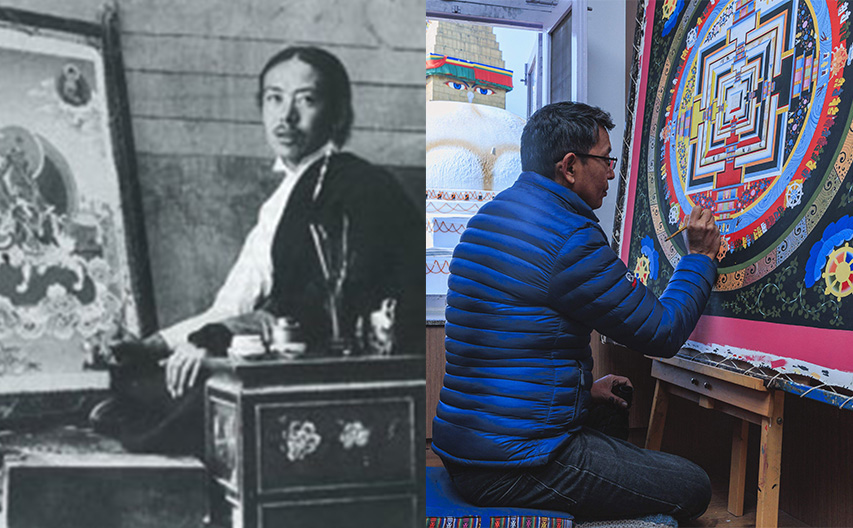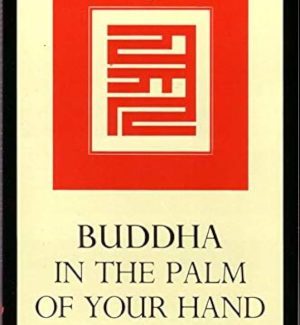For centuries, art has been a powerful link between the tangible and the intangible, and few expressions capture this union more exquisitely than Thangka paintings. Originating in Nepal and later embraced by Tibet, these paintings have a captivating history. They trace back to a time when Princess Bhrikuti of Nepal wed Songtsän Gampo, the Tibetan ruler, in the 11th century, carrying with her the essence of Nepalese artistry. Thangka art isn’t just about visuals; it’s a tapestry woven with stories of culture and spirituality, resonating deeply with those who encounter it.
In this blog post, let’s embark on a fascinating journey as we delve into the captivating origins and evolution of Thangka paintings. From their ancient roots to modern interpretations, we’ll unravel the intricacies of this extraordinary art form. Join us as we explore its techniques, symbolism, and the lasting impact it has left on culture.
- Ancient Roots of Thangka Paintings: The roots of Thangka paintings stretch back to the ancient Buddhist traditions of India before spreading to Tibet. The term “Thangka” originates from the Tibetan word “thang,” which means “unfolding” or “scroll.” Initially conceived as portable religious scrolls, Thangkas served as visual aids for meditation and spiritual reflection. Tibet, with its deep ties to Buddhism, embraced Thangka paintings fervently, elevating them to new levels of artistic expression. Supported by Tibetan rulers and monastic communities, Thangka art became intertwined with Tibetan Buddhist rituals and practices. The earliest surviving Thangkas, dating back to the 11th century, stand as testaments to the cultural exchange between Tibet, India, and Nepal.
- Techniques and Materials: A Thangka painting is a labor-intensive process that demands remarkable skill and attention to detail. Thangka artists, typically trained from a young age, adhere to traditional techniques passed down through generations. The canvas, usually crafted from cotton or silk, undergoes careful preparation with layers of glue and gypsum to ensure a smooth and durable surface, guaranteeing the artwork’s longevity. The pigments used in Thangka paintings are sourced from a diverse array of materials. Minerals like crushed gemstones and precious metals such as gold and silver are finely ground into powders. Natural substances like plants and minerals are also utilized, with each pigment chosen for its symbolic and aesthetic significance. These pigments are mixed with a binder, often animal glue, to create a paintable medium. Thangka artists employ a variety of brushes crafted from animal hair to apply the pigments to the canvas. Finer brushes are used for intricate details, while broader ones cover larger areas. Through meticulous brushwork executed with precision and patience, Thangka artists breathe life into their vibrant and awe-inspiring compositions.
- Symbolism and Spiritual Significance: Thangka paintings are more than just beautiful artworks; they hold a sacred essence, rich with symbolism and spiritual depth. Each element meticulously depicted within a Thangka carries profound significance, representing key aspects of Buddhist philosophy and the spiritual quest. These compositions often feature deities, Buddhas, Bodhisattvas, and celestial beings, with the central figure, usually Buddha or a specific deity, serving as a focal point for meditation and reflection. Every detail, from the choice of colors to the intricate postures, holds specific teachings and qualities. Mandalas, intricate geometric patterns, frequently adorn Thangka paintings, symbolizing the cosmic order and the interconnectedness of all existence. These complex designs guide meditation, inviting viewers to explore the depths of their consciousness. The iconography in Thangka art is meticulously precise, following established traditions. Hand gestures, or mudras, convey various virtues, such as compassion, wisdom, and enlightenment. Each deity embodies unique attributes, providing devotees with guidance and inspiration along their spiritual journey.
- Evolution and Contemporary Interpretations: Over the centuries, Thangka paintings have undergone an evolution, drawing influences from various regions and artistic styles. While staying true to traditional techniques and symbolism, modern Thangka artists have ventured into new territories, both in materials and themes. In recent times, there’s been a renewed fascination with Thangka art that extends beyond religious circles. Contemporary artists are pushing boundaries, blending traditional aesthetics with contemporary perspectives. They’re experimenting with unconventional materials, introducing abstract elements, and delving into modern social and environmental issues, all while preserving the essence of Thangka paintings. Conclusion Thangka paintings are far more than mere visual representations; they are gateways to a realm of spirituality and cultural heritage. Through their intricate details, vibrant colors, and deep symbolism, Thangka art encapsulates the very essence of Tibetan Buddhism, offering a visual roadmap for spiritual enlightenment. Exploring the rich history and origins of Thangka paintings, we come to appreciate the profound artistry, devotion, and wisdom that have sculpted this remarkable tradition. Whether revered as religious relics, admired as artistic masterpieces, or embraced for their spiritual teachings, Thangka paintings continue to captivate and inspire people worldwide. Their enduring legacy stands as a testament to the enduring power of art, transcending time to bridge our earthly existence with the spiritual realm. These enchanting creations beckon us to embark on a personal journey toward enlightenment, stirring a sense of wonder and awe as we unravel the mysteries of existence through the brushstrokes of these magnificent Thangka masterpieces.



